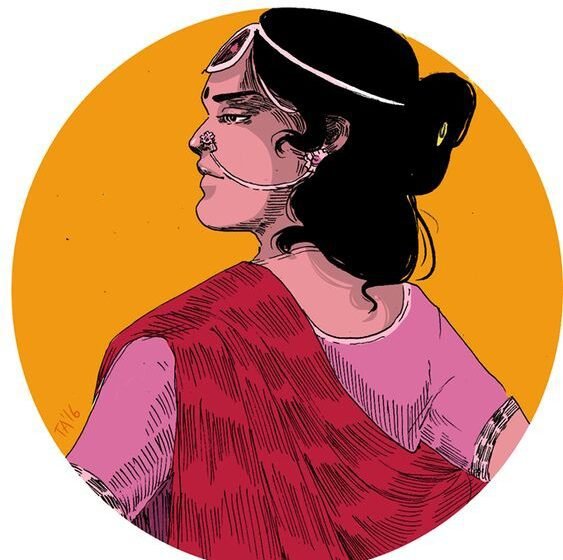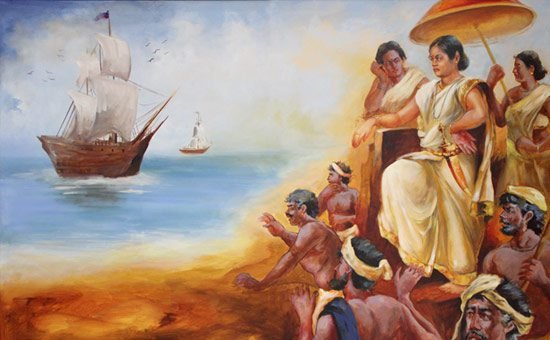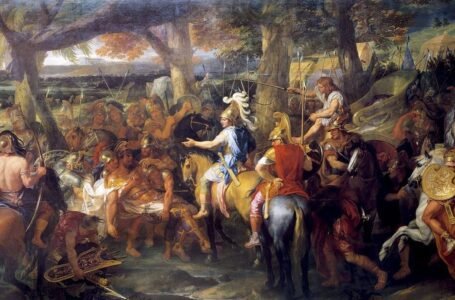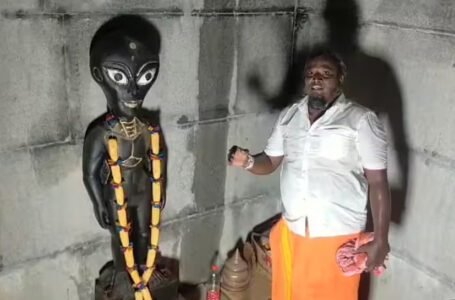Rani Abbakka Chowta-The Fearless Queen

Every water splash of the Arabian Sea remembers the valor of this queen who knew no fear. The immortal, limitless sky has borne witness to her courageous acts as she rode on her horseback, looking at the enemy with fierce eyes. Rani Abbakka was the brave daughter of Karnataka, a symbol of bold elegance.

Rani Abbakka known as Abhaya Rani (The Fearless Queen) was a valiant warrior and one of the most notable administrators of Tulu Nadu (a province consisting of present-day Dakshina Kannada District, portions of Udupi and Kasargod). Rani Abbakka defended her province from the Portuguese for decades. She was the first Tuluva queen of Ullal and is also acclaimed as the first woman freedom fighter of India.
The capital city,Ullal and the Ullal fort is located just a few kilometres away from the city of Mangalore, on the aesthetic shores of the Arabian Sea. According to local legends, Rani Abbakka was an extraordinary child,with excellent skills in warfare and military tactics. She was a veteran in archery and sword fighting.
The Chowta Dynasty was a Jain dynasty that ruled Tulu Nadu from the 12th to the 18th century. They followed the custom of ‘Aliyasantana’ or matrilineal inheritance. Tirumala Raya,Abbakka’s uncle crowned her the queen of Ullal. She was then married to Lakshmappa Arasa Bangaraja,king of the Banga principality in Mangalore. The marriage however didn’t last for long and hence Abbakka had to face betrayal from him as he teams up with the Portuguese in the future.
Rani Abbaka’s administration was well-represented by Jains, Hindus as well Muslims. Historical research also reveals that during her rule in the 16th century, beary men had served as seamen in the naval force. Rani Abbakka had personally supervised the construction of the dam at Malali; she had appointed Baeryrs for boulder work. Her army too consisted of people of all sects and castes.

The Portuguese entered Indian territory through seaways, when Vasco Da Gama discovered the sea route to India and reached Calicut. Further they controlled maritime routes and started capturing ports. After capturing the flourishing port of Mangalore, it was an “all eyes on Ullal” situation. Rani Abbakka was now alert and prepared herself for any future attacks. In 1555, the Portuguese sent Admiral Don Alvaro da Silvereira against the Queen who had refused to pay them the tribute, but the Rani was successful in defending her throne.
In 1558, the Portuguese attacked Mangalore once again, causing death and destruction and setting the city ablaze. In 1567, they attacked Ullal again but failed disastrously. The same year general Joao Peixoto was sent by the Portuguese Viceroy Antony Norohna with a fleet of soldiers. He captured the city of Ullal and also entered the royal court. However, the Queen escaped and took refuge in a mosque. The same night, she counter-attacked the Portuguese army, with a help of 200 soldiers and killed General Peixoto and 70 Portuguese soldiers. The invaders were forced to flee back and the soldiers remaining in Ullal were celebrating early, unaware of the brutal defeat of their fellow soldiers back at the palace. Taking advantage of this opportunity, about 500 Muslim supporters of Abbakka Rani attacked the Portuguese and killed Admiral Mascarenhas.

This did not end the Portugese coast capture spree in India. They returned stronger, conquered Mangalore yet again and did not stop there. They captured Kundapura too. Now Rani Abbakka was a threat to them but this time the Portuguese won the support of the queen’s estranged husband, launching a fiery attack on Ullal. A determined Abbakka fought all her adversaries with strength.
She formed an alliance in 1570 with Bijapur Sultan Ahmed Nagar and the Zamorine of Calicut, who were also opposing the Portuguese. Kutty Pokar Markar, a general of the Zamorine fought on behalf of Abbakka and destroyed the Portuguese fort at Mangalore but while returning he was killed by the Portuguese.
Abbakka’s biggest adversary turned out to be the same Lakshmappa Arasa, who revealed all her strategies and helped the Portuguese trap Abbakka. She was imprisoned and died in custody. She fought till her last breath. Her piercing battle cry – “Save the motherland. Fight them on land and the sea. Fight them on the streets and the beaches. Push them back to the waters”, echoed through the winds as she and her soldiers fired flaming arrows at the Portuguese ships.

This heroic queen is remembered even today in parts of Karnataka. Her stories have been passed on to generations through Yakshagana- a folk dance form of Karnataka and Daiva Kola-a local dance ritual of Tulunadu. In Daiva Kola, Abbakka is portrayed as dark and good looking, always dressed in simple clothes like a commoner. She is portrayed as a caring queen who worked late into the night dispensing justice. Legends also claim that Abbakka was the last known person to have used the Agnivana (fire-arrow) in her fight against the Portuguese. The ‘Veera Rani Abbakka Utsava’ is held in her memory and the ‘Veera Rani Abbakka Prashasti’ is given to women for their exceptional contributions in their fields. The Indian coast guard ship ICGS Rani Abbakka is also named in her honour. In 2003, Indian post issued a special stamp in her name.
Decades have gone by yet her glory remains un-faded. She was a lioness who reigned, this is the story of one of India’s bravest daughters -the story of Rani Abbakka, the fearless queen!


